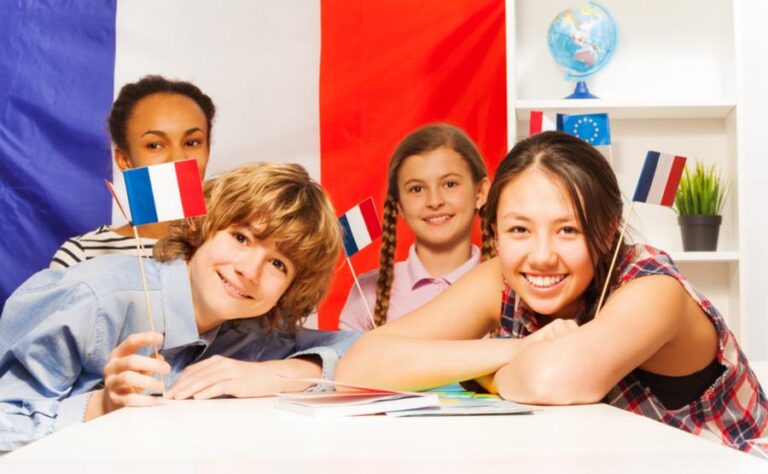As the summer holidays draw to a close, France prepares for “La rentrée,” the annual return to school that marks a fresh academic year and a flurry of adjustments for families, students, and educators alike. Understanding the unique structure and nuances of the French school system can be challenging, especially for expatriates and newcomers. In this article, The Connexion breaks down 12 essential points to help you navigate the French educational landscape, from school calendars and curriculum to enrollment procedures and cultural expectations. Whether you are a parent, student, or simply interested in how schooling operates across the Channel, this guide offers clear insights into the rhythms and realities of La rentrée.
Understanding the French School Year Calendar and Key Dates
The French school year typically spans from early September to early July, punctuated by several well-defined holidays that offer essential breaks for students and teachers alike. Unlike some other systems, the calendar is divided into three terms, each ending with a vacation period that varies by region to help distribute travel demands across the country. Key dates include the start of the school year in early September, the All Saints’ holiday in late October, and a mandatory two-week winter break in February. Spring break in April is similarly staggered by zone, ensuring that not all regions are off simultaneously. Understanding these dates is crucial for families relocating to France or those planning extended visits.
Here is a concise overview of the major breaks throughout the French school year:
| Holiday | Typical Dates | Notes |
|---|---|---|
| La Rentrée | Early September | Start of the school year |
| All Saints’ Break | Late October – Early November | 2-week autumn break |
| Christmas Holidays | Late December – Early January | 2-week winter break |
| Winter Break | February (by zones) | 2-week mid-term holiday |
| Spring Break | April (by zones) | 2-week spring holiday |
| Summer Holidays | Early July – Early September | Longest break of the year |
These structured breaks are designed to support family time, tourism, and cultural activities, balancing education with wellness. It’s important to check local or regional calendars, as France’s division into three educational zones (A, B, and C) leads to staggered vacations. This zoning helps manage resources and alleviate overcrowding but can complicate planning for those living near zone borders. Keeping a close eye on official announcements ensures no surprises, especially for newcomers adapting to the rhythm of French school life.
Navigating School Enrollment and Registration Procedures
Enrolling your child in a French school involves navigating a series of administrative steps that vary depending on the region and the child’s age. Parents should first contact the local mairie (town hall) to register their child officially. This initial step can require documents such as proof of residence, the child’s birth certificate, and previous school records if applicable. Depending on the commune, appointments may be necessary, and the availability of spaces can differ greatly between public and private institutions.
Once enrollment is confirmed at the mairie, parents must then complete registration at the assigned school. This stage often includes submitting additional paperwork, such as health records and vaccination certificates. It is worth noting that for children moving into the secondary education cycle, registrations might necessitate consultation with the Conseil Départemental or educational authorities to allocate school placements fairly. Keeping track of deadlines and required documents is essential to avoid delays, as late registrations might result in placement in less preferred schools or waiting lists.
Decoding the Curriculum Structure and Subject Choices
The French curriculum is distinctly structured, emphasizing a broad foundation in the early years before allowing students to specialize. From collège (middle school) onwards, pupils follow a uniform core curriculum covering subjects like French literature, mathematics, history-geography, and foreign languages. By the lycée (high school) years, however, the system opens up to a variety of specialized tracks—known as “series”—tailored to different academic or vocational interests. This phased approach ensures that all students receive a well-rounded education before honing in on areas that align with their career or higher education goals.
When it comes to subject choices, students must navigate options based on their chosen series. The three main tracks are general, technological, and vocational. Each track offers its own subset of disciplines, ranging from literature and sciences to applied arts and technical studies. Notably, recent reforms aim to provide more flexibility by allowing a mix-and-match of subjects, giving students greater control over their portfolio. Here’s a snapshot of core subject streams available at lycée level:
| Track | Typical Subjects | Focus Areas |
|---|---|---|
| General | Philosophy, Mathematics, Sciences, Languages | Academic disciplines, university prep |
| Technological | Management, Laboratory sciences, Design, Hospitality | Applied technology, vocational skills |
| Vocational | Mechanical, Electrical, Commercial, Healthcare | Direct job readiness, technical qualifications |
Tips for Supporting Your Child’s Transition Back to School
Helping your child adjust smoothly after the summer break can make the return to school much less stressful for the whole family. Start by re-establishing routines well before the first day: regular bedtimes, morning schedules, and balanced meals help reset their internal clocks and energy levels. Encourage open conversations about their feelings towards school changes, classmates, and expectations to pinpoint any concerns early. Positive reinforcement and celebrating small achievements during this period can boost their confidence and motivation.
Practical support goes a long way. Equip your child with the necessary school supplies, familiarize them with the new timetable, and discuss the school’s expectations and rules together to build clarity and calm. If possible, attend orientation sessions or school open days to demystify the environment. Below is a quick reference table summarizing key strategies to ease this transition:
| Strategy | Benefit |
|---|---|
| Regular Routines | Establishes predictability and comfort |
| Open Dialogue | Identifies worries and promotes trust |
| Preparatory Visits | Reduces anxiety by familiarization |
| Organized Supplies | Enhances readiness and independence |
Closing Remarks
As the new school year begins, understanding the nuances of the French education system is crucial for families both new and established in the country. From the structure of the academic calendar to the distinct approach to student welfare, these 12 key points provide valuable insight into “La rentrée.” Staying informed helps parents navigate the transition smoothly and supports students as they embark on another year of learning in France. For further details and updates, The Connexion will continue to follow developments in French schools throughout the year.




